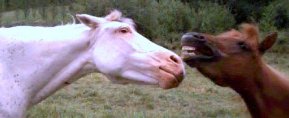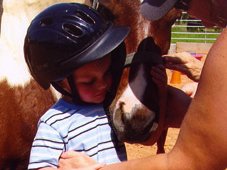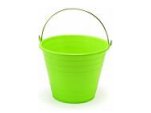Telling a Horse’s Age from its Teeth

Simply study the pictures below, memorize the special characteristics of each stage. Then go practice on horses that someone knows the age of. See how close you can come to the real age of the horse.
- When the horse has grown all its permanent teeth it is said to have a "full mouth".
- The age of the horse can be determined with some accuracy by looking at its teeth.
- As the horse grows and ages the changes that take place can help you tell how old it is.
- As the horse grows older determining its age becomes more difficult.

Birth to 2 Weeks
At birth or within 2 weeks the foal has two central incisors upper and lower. The laterals appear at 4-6 weeks, the corners at 6-9 months.

One Year
At one year a full set of incisor "mild teeth, six upper and lower.

2.5 Years
By two and a half years the central incisors (upper and lower) fall or and permanent teeth come in. In this picture Tiger is showing his teeth. He is 2.5 years old here.


3 Years
The central incisors at fully grown and showing wear by 3 years. At 3.5 years milk teeth laterals on the upper and lower are replaced by permanent teeth.

4 Years
Lateral incisors now are fully grown and showing wear. 4.5 years the milk teeth in the corners of each jaw are replaced by permanent teeth.

4 to 5 Years
In male horses and sometimes in females small pointed teeth called tushes or "canines" appear behind the corners in the bars of the mouth.
5 YEARS
The corner incisors now fully grown and wearing.

6 Years
The horse has a full set of permanent teeth.

7 Years
A hook begins to show on the corner teeth on the upper jaw. But remember, a similar hook shows at 9 years, too.

8 Years
It gets more difficult to tell the age of the horse now. The shape, markings and wear of the surfaces of the teeth (the incisor table) can help you.

9 Years
At about 8 – 9 years the horse is said to be aged. A "dental star" shows on the centrals at eight years. By nine the tables of the laterals begin to take on a triangular shape.

10 Years
Galvayne’s Groove, a dark marking on the upper corner of the incisors, begins. The groove grows downward as the horse ages. The dental star now shows on all incisors.

15 Years
The groove reaches halfway down the corner teeth.

20 Years
The groove reached all the way down and then begins to disappear from the top downwards. The teeth are sloping outward now.

25 Years
The groove is gone now from the top half of the corner teeth. As the horse gets older and older the gums recede and the teeth appear longer.



